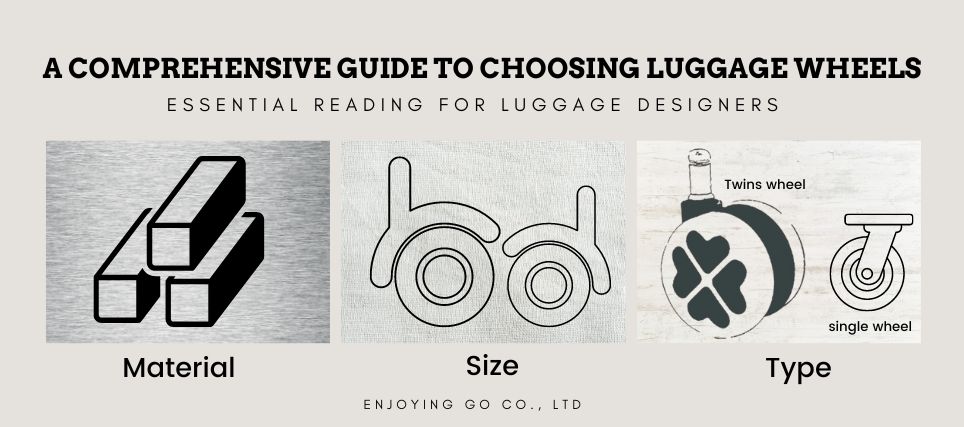Luggage often endures rough handling during use, making it crucial to choose luggage with durable wheels. This article aims to guide designers and procurement specialists in the luggage manufacturing industry on the key factors to consider when selecting luggage wheels, helping you find the best wheels for your product needs.
The Importance of Luggage Wheels
Wheels are a critical component of any luggage, affecting its longevity and user experience. However, many luggage manufacturers focus heavily on the material and craftsmanship of the suitcase body, often overlooking the quality of the wheels. In reality, the ease of rolling and durability of a suitcase largely depend on the quality and design of its wheels.
Consumer Needs Consideration
Consumers typically test luggage in an empty state when purchasing, which does not accurately reflect its performance in actual use. Especially in many European countries, where roads are uneven and vehicle access is limited, even after reaching the nearest station or destination, consumers need to navigate ancient cobblestone streets. In such conditions, the true value of high-quality wheels becomes evident.
Key Factors in Choosing Luggage Wheels
- Material
Luggage wheels are primarily made from metal, plastic, or nylon, each with its advantages and disadvantages:
- Metal Wheels: The most durable but also the heaviest, suitable for high-end luggage requiring high durability.
- PP-made Plastic Wheels: Lighter but less durable, ideal for budget-friendly luggage.
- Nylon & PU Wheels: Offer a good balance between strength and weight, making them a great choice for mid-range to high-end luggage. PU Caster Wheels suit all types of floors and won't hurt hardwood floors.
- Size
The size of the wheels significantly impacts their durability and maneuverability:
- Large Wheels (60-75mm): More robust, can carry more weight, and easier to maneuver on uneven surfaces.
- Small Wheels (37-55mm): More flexible but less durable, suitable for lightweight luggage.
- Type
There are two main types of luggage wheels:
- Swivel Wheels: These can rotate 360 degrees, allowing the luggage to turn in any direction easily. They are highly maneuverable.
- Fixed Wheels: Move only forward and backward, have a simpler structure, not fit for luggage used.
- Configuration
There are two main configurations of luggage wheels:
- Single Wheels: Cost-effective but less stable, making them more prone to wear and damage over time. Single wheels might struggle to maintain balance under heavy loads, leading to quicker deterioration.
- Twin Wheels: Higher cost but offer better stability and weight distribution. Double wheels are less likely to break down over long-term use as they evenly distribute the load and maintain balance more effectively.
Conclusion
Choosing high-quality wheels is essential to enhance the market competitiveness and customer satisfaction of your luggage products. Durable wheels not only extend the lifespan of the luggage but also significantly improve the user experience, boosting product sales and brand reputation.
We hope this article provides valuable insights for your luggage design and procurement processes. Selecting the right wheels will add a competitive edge to your products and lead to better market performance.
Click here to find the perfect high-quality casters for your products.

